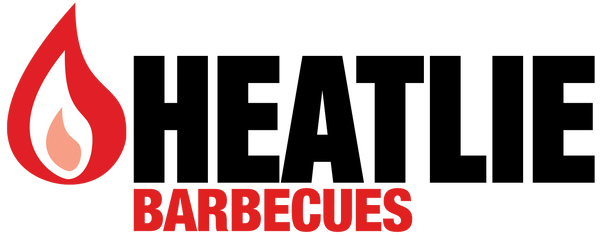You might have noticed that Heatlie BBQs don't look like your average BBQ. Most people would be used to the control knobs being on the front and the burners running from front to back. Heatlie utilises a different system that provides better heat and efficiency. Let's look at the advantages of this system and why Heatlie has stuck by it for over 40 years now.
Horizontal Burner System
All Heatlie BBQ products, including our flat plate range, Island Gourmet Elite, Snappy King and Roaster, use the horizontal ribbon burner system. This means two (or one for the Snappy King and Roaster) full-length burners running right to left. This ensures more of the plate receives the heat output it deserves and results in fewer cold spots than the conventional front to back burner system.
The combination of the ribbon burner system and the mild steel plate requires a lot less energy (megajoules – gas consumption) for cooking than a conventional front to back burner system with cast iron burners and a cast iron cooking surface. Heatlie barbecues, therefore, use a less gas for a similar or better heat output.
What is a megajoule?
The "joule" is a unit of energy; a megajoule is one million joules. One megajoule is enough energy to power a 100 watt light bulb for a little over 2 hours 45 minutes. The majority of cast iron burners are 13 – 15 megajoules per hour, meaning a 4 burner would create 60 MJ/Hr with all 4 running at full capacity. For comparison, a Heatlie 850 has two burners each creating 21 MJ/Hr, for a total output of 42.
You might be thinking then, Heatlie BBQs produce less MJ/Hr, does that mean they are a weaker BBQ? The answer is no, as there is a lot more at play than just the burner output.
An 850 BBQ has a similar cooking area to your average 4 burner hooded BBQ, roughly 4500cm squared, yet requires 33% less gas consumption to adequately heat the same area. The stats speak for themselves.
Cooking Plate Material
Heatlie's use of mild steel material for cooking plates creates a more efficient BBQ. Mild steel is incredibly good at conducting heat and requires less heat output to create a hotter plate, in comparison to cast iron. Mild steel also spreads heat well, leaving you with very minimal cold spots across your BBQ. That way you can utilise every square centimetre of that big plate for your snags.
If you can recall using cast iron burners and a cast iron cooking plate, often the outer edges of the plates or grill are much cooler and leave your food half cooked compared to what is directly over the burner.
Stainless steel, although we offer this as an option, is similar to cast iron in its inability to spread heat evenly.
Solid Plates
Having an entirely solid, flat plate means that heat loss is minimised. With grills, a lot of heat is wasted simply from letting it escape through the open spaces off into the atmosphere. With a Heatlie, every single megajoule is injected straight into the plate, with the mild steel conducting it with the highest efficiency possible.
To sum up, it's a combination of several factors that make Heatlie BBQs a more powerful, efficient and quality build of BBQ than what you'll anywhere else. You can't deny several decades of engineering and design research that has led to what Heatlie is today. Combine this with the Australian Made build, and you've got a winning formula!
Check out our range of flat plate BBQs on our online store today.

